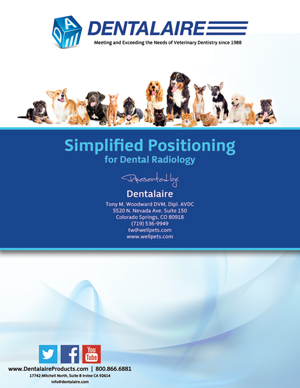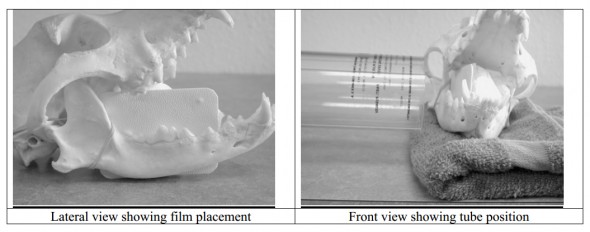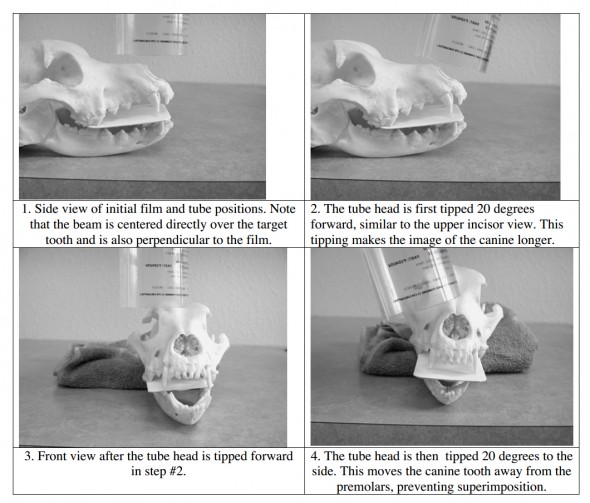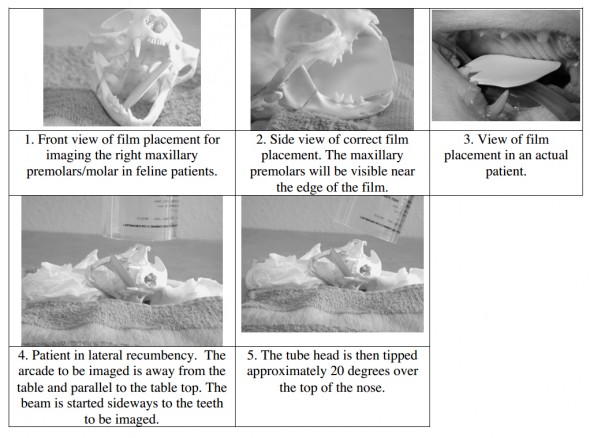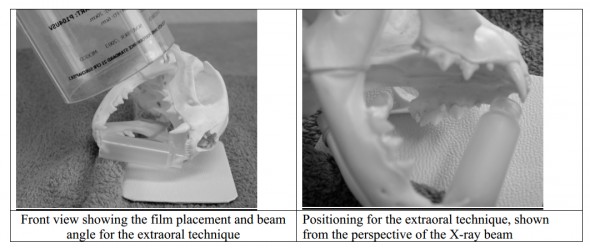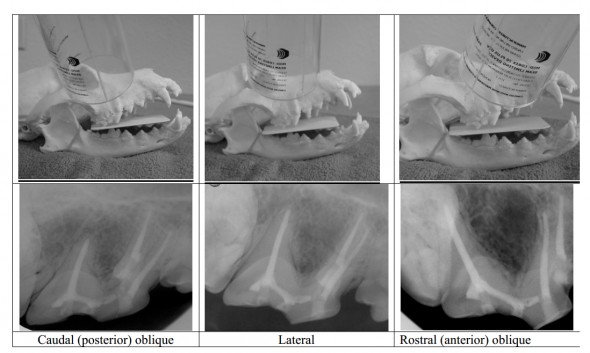Click the above image to view the PDF, or click here to download.
| Dental Radiology “CHEAT SHEET” | |
| Area imaged | General Technique and Tips |
| Lower PM and M | Place film in vestibule between the tongue and teeth. The beam is angled perpendicular to film. This is the only “parallel technique”. |
| Lower incisors +/- Canine | Start by aiming beam on ventral midline perpendicular to the film. Then tip the tube head forward 20 degrees so the beam is angled 20 degrees caudally. If desired, using larger film will allow visualization of the lower canines on the same film. |
| Upper incisor | Start by aiming beam on the dorsal midline, perpendicular to the film. Then tip the tube head forward so the beam is angled 20 degrees caudally. |
| Upper canines | Start by aiming beam dorsally over the top of the canine, similar to the upper incisor view. Then tip the tube head 20 degrees forward and 20 degrees to the side. This will move the image of the root away from the premolars. The film should slightly overlap the tip of the crown forward and to the side.. Excessive film sticking out of the mouth is wasted. The forward tipping elongates the tooth, while the lateral tipping serves to move the canine tooth away from the overlapping premolars. |
| Upper PM and M | Place the film mostly over the palate. Start dorsally over the top of the target teeth. Tip the tube head 45 degrees to the side of the face. Cats require a modified technique to avoid superimposition of the Zygomatic Arch. The film is placed diagonally across the mouth from the inside of the maxillary teeth on the side opposite that to be imaged, to the inside of the mandibular teeth on the side to be imaged. Position the patient so that the target teeth are on top and the teeth line up parallel to the table top. Start the beam lateral to the maxillary premolars, and tip the tube head 20 degrees over the top of the nose. Tipping too little cuts off part of the target teeth from the edge of the film. Tipping too far accentuates the Zygomatic Arch. |
“Three Simple Rules”
All positioning errors involve the three parameters of tube angulation, tube position and film position. Three simple rules serve to identify and correct any errors.
- If the image is foreshortened or elongated, adjust the tube angle. To make the roots longer, move the tube head more laterally.
- If you cut the target off at the edge of the beam (cone cut), simply move the beam over toward the area of cone cut.
- If you cut the target off at the edge of the film, move the film over toward the area you cut off.
The following pictures show film placement, starting position of the beam and appropriate tipping of the beam to image the five different areas of the mouth. These diagrams are best used in conjunction with the positioning “Cheat Sheet” above. When performed as indicated, these simple positioning guidelines will provide well-positioned dental films.

